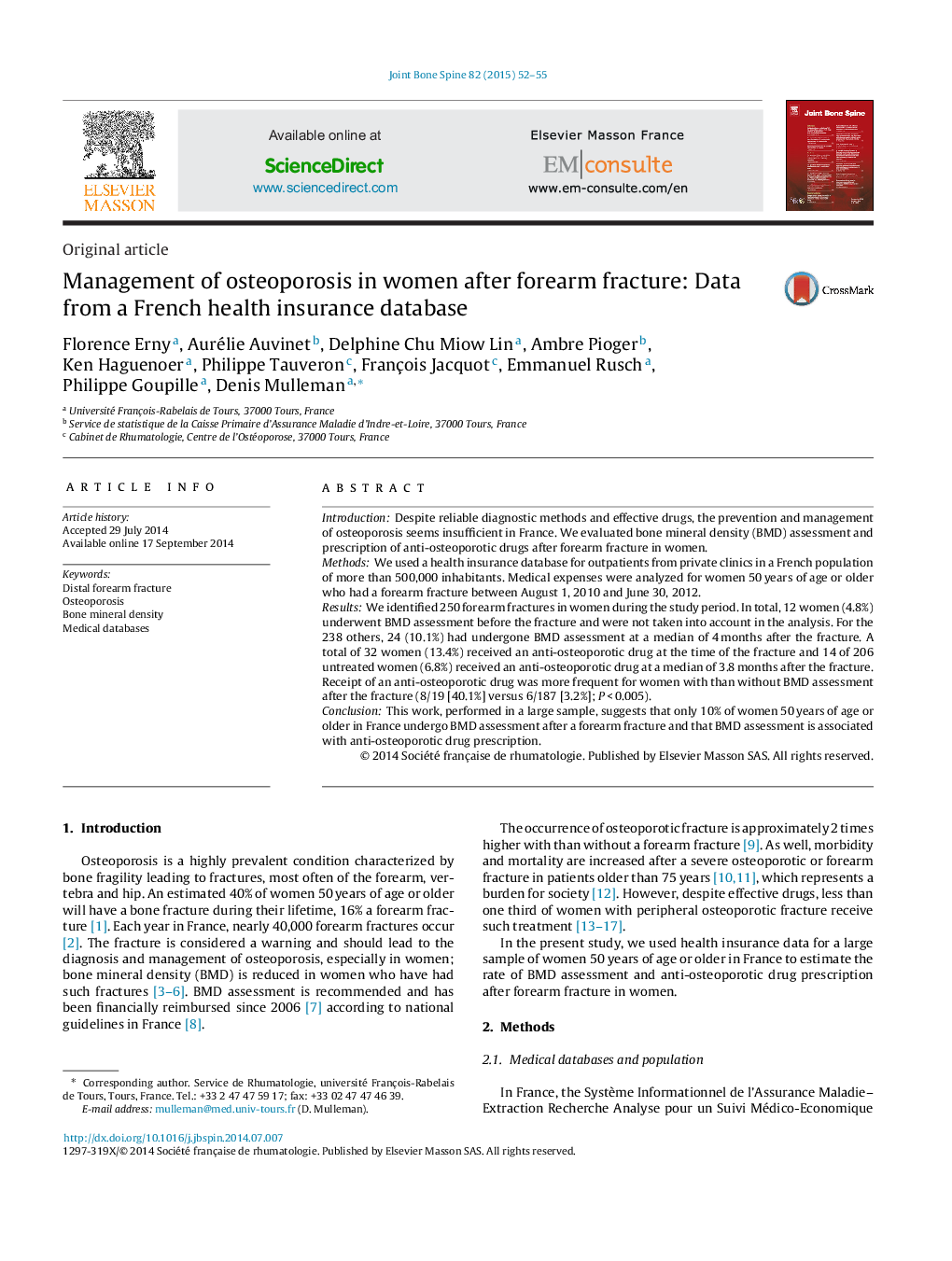| Article ID | Journal | Published Year | Pages | File Type |
|---|---|---|---|---|
| 3365662 | Joint Bone Spine | 2015 | 4 Pages |
IntroductionDespite reliable diagnostic methods and effective drugs, the prevention and management of osteoporosis seems insufficient in France. We evaluated bone mineral density (BMD) assessment and prescription of anti-osteoporotic drugs after forearm fracture in women.MethodsWe used a health insurance database for outpatients from private clinics in a French population of more than 500,000 inhabitants. Medical expenses were analyzed for women 50 years of age or older who had a forearm fracture between August 1, 2010 and June 30, 2012.ResultsWe identified 250 forearm fractures in women during the study period. In total, 12 women (4.8%) underwent BMD assessment before the fracture and were not taken into account in the analysis. For the 238 others, 24 (10.1%) had undergone BMD assessment at a median of 4 months after the fracture. A total of 32 women (13.4%) received an anti-osteoporotic drug at the time of the fracture and 14 of 206 untreated women (6.8%) received an anti-osteoporotic drug at a median of 3.8 months after the fracture. Receipt of an anti-osteoporotic drug was more frequent for women with than without BMD assessment after the fracture (8/19 [40.1%] versus 6/187 [3.2%]; P < 0.005).ConclusionThis work, performed in a large sample, suggests that only 10% of women 50 years of age or older in France undergo BMD assessment after a forearm fracture and that BMD assessment is associated with anti-osteoporotic drug prescription.
